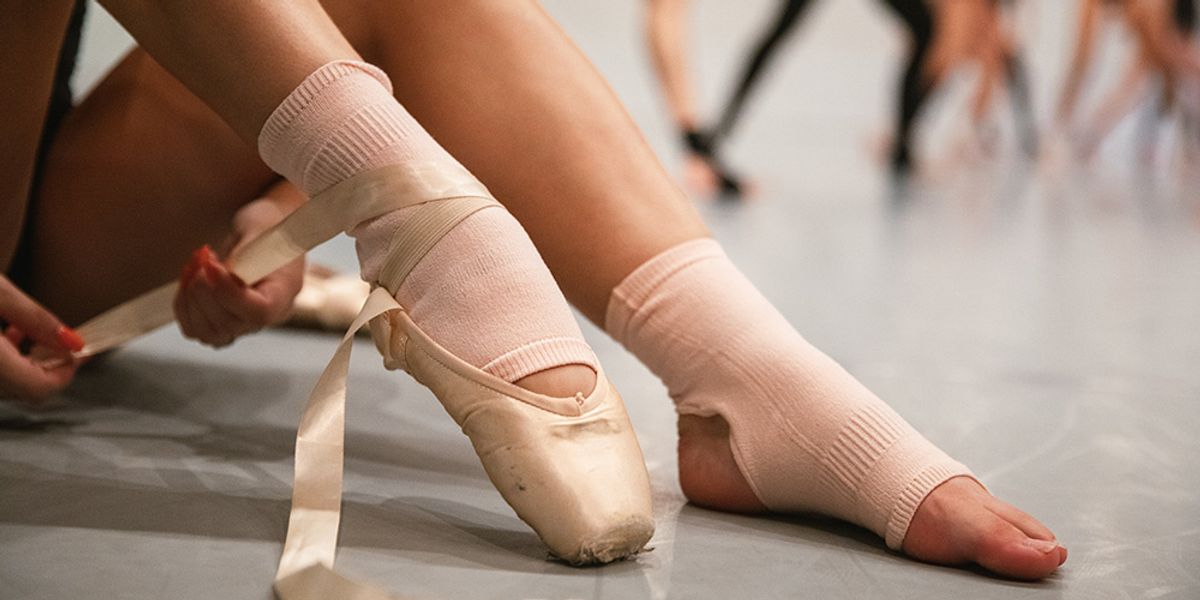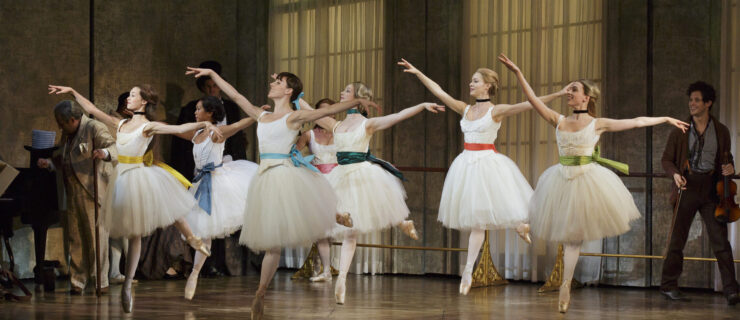Why Apolla's Compression Footwear Is A Game-Changer for Ballet Dancers
Ballet dancers today are asked to do more with their bodies than ever before. The physical demands of a ballet career can take an immense toll on a dancer’s joints and muscles—subjecting them to pain, inflammation and an increased risk of injury. Considering all that is required of today’s dancers, having a top-notch recovery regime is paramount.
Enter Apolla Performance Wear, which is meeting ballet’s physical demands with a line of compression footwear that is speeding up the recovery process for professional dancers by reducing inflammation and stabilizing the joints.
Indeed, time is of the essence for today’s ballet dancers, who often need to be performance-ready within 24 hours of a full day of dancing. So while the long-standing recommendation of RICE (rest, ice, compression, elevation) still holds true, says Heather Southwick, director of physical therapy at Boston Ballet, dancers need all the help they can get in expediting their recovery.
Why is compression such a vital step in the recovery process—especially for dancers? For one, it reduces swelling by increasing circulation. (While swelling is a natural reaction to protect the affected area, says Southwick, it can inhibit circulation and decrease range of motion—not to mention cause pain.) Compressing the targeted area and then releasing it can lead to faster muscle and joint recovery and help prevent the buildup of fluid caused by swelling.
“But dancers don’t have the normal timeframe for normal physiology to happen,” Southwick says. “Sometimes they are dancing six days a week and easily six hours or more a day.” That’s where Apolla comes in—allowing dancers to jump-start their compression with products that can be worn before, during and after dancing.
Apolla’s Shocks (“shoe” + “sock”) have long been popular in the contemporary dance scene. But their products are just as relevant for ballet dancers. In fact, Apolla recently partnered with Boston Ballet to create two compression products designed for ballet dancers in particular: the Joule, a sock with cutouts for the heel and toes that can be worn over pointe shoes, ballet shoes or bare feet; and the K-Warmer, a thigh-high compression leg warmer. Unlike other compression products which are tight throughout the entire garment, Apolla Shocks offer more support around targeted areas such as the arches of the feet and ankles. The heel and toe areas of products like the Infinite Shock or Performance Shock are intentionally a bit looser to allow for more pinpointed compression in the arches and ankles.
In addition to their compressive qualities, Apolla Shocks offer dancers alignment support—especially important for ballet dancers with super-flexible feet. Shocks like the Joule subtly discourage overstretching the feet, while still allowing dancers to build strength. “When they’re doing certain ballets, like Balanchine, where the look is really to go over the box of the shoe, they’re stretching the front of the ankle quite a bit,” says Southwick. “The Joule provides a little feedback and support in rehearsals so that, as the dancers are doing movements repetitively, they aren’t straining the entire anterior aspect of the ankle.” Dancers are also finding that their Apolla Shocks can replace kinesio tape.
Apolla Shocks have been such a boon for some ballet dancers that they’re doing away with their ballet shoes entirely during class. Still, in many settings where teachers may prefer traditional ballet footwear, Apolla Shocks offer excellent supplemental support. “I use them almost every day,” says Boston Ballet soloist Irlan Silva. “Even at my house when I’m resting, I leave them on. Afterward, when I take them off, my feet feel lighter.” He likes to wear the Performance or Amp Shocks to warm up before class, and after class he’ll wear the Infinite Shock, Apolla’s most compressive mid-calf length sock to recover. He even wears the K-Warmer when he travels. “When I’m in an airplane, I put them on and they help me so so much,” he says.
Despite a greater susceptibility to injury due to today’s hypermobile aesthetic and dancers’ jam-packed schedules, ballet dancers are better equipped to meet those challenges than ever before. With the help of Apolla products and other tools, dancers are thriving as active participants in their own self-care and training, dancing longer and healthier than ever before. “The newer generation of dancers thinks a lot about how they can care for their bodies,” says Southwick. “They understand that science plays a big role in their care.”





